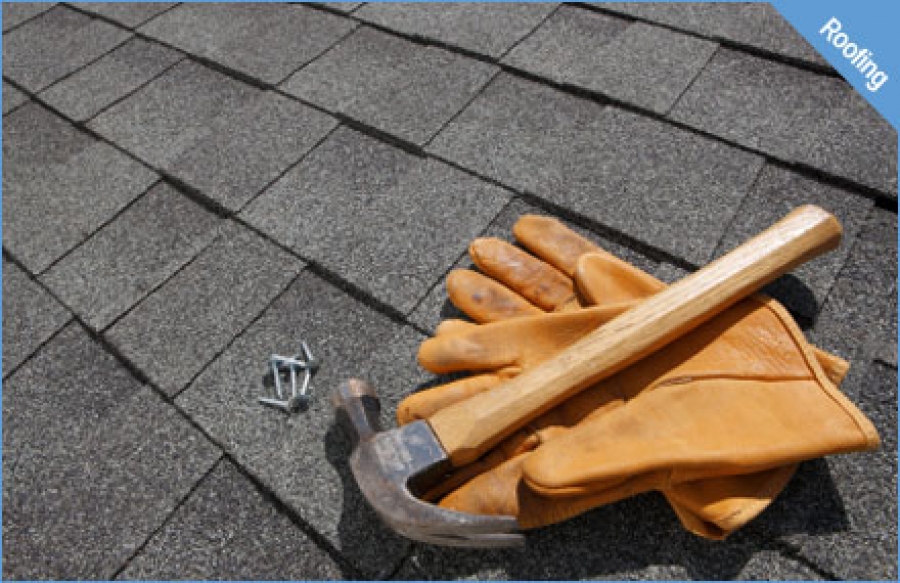Needing TLC. Maintenance required (sometimes high maintenance). Topped off with a glorious covering in a variety of colors and textures. No, I am not talking about your significant other, I am talking about your home's roof. Whether you are buying a personal home or investment property, the more you know about roofing systems, the better purchasing decision you can make.
With proper care and maintenance, a good roof, the first line of defense in protecting what is likely your most expensive and prized asset, will last decades. On the flip side, a poorly maintained roof can cause your home to appear much older than its true age and can affect its curb appeal.
It's not just the appearance either. The results of a poorly maintained roof can impact the wood sheathing underneath, ceilings and walls inside the home, and even the foundation.
For you DIYers, the best way to “do it yourself” when it comes to roof maintenance is quite simply, don't!! Seriously, don't! You need professional help when it comes to evaluating and fixing a roof. To learn more, the experts at Summit Point Roofing in Ada, MI have some valuable information on their website. This will give you some insight into materials and ancillary items.
A QUICK SYSTEM OVERVIEW
Generally speaking, your roof will have a central beam with a series of joists angled down from the center beam. The spacing of the joists will depend on upon your local zoning codes. On the outside of the joists, there will be a layer of sheathing, usually plywood sheets, over which the roofing materials will be laid. Then, a layer of tar paper and then the shingles.
Depending on your local weather patterns and zoning ordinances, there will be a series of gutters and downspouts and/or eaves and overhangs. These systems provide the critical tasks of channeling and diverting water off of, and away from, your home.
ROOFING MATERIALS
Just as there are a wide variety of styles, ages and price ranges of homes across the United States, there are also a variety of roofing materials out there.
Mopped Hot Tar - This is exactly what it sounds like and is typically reserved for flat roofed homes. Perfect examples can be found in many of the row houses found along the East Coast. Someone takes a mop and a container of hot tar up on the roof and “swabs the deck” so to speak.
Slate Shingles - These are quarried stones that are shaped into individual shingles. These roofs can last an extraordinarily long time with basic upkeep. Seventy-five years is not atypical and one hundred years or more is not uncommon.
Asphalt/Asphalt-Fiberglass Composite Shingles - Drive through most subdivisions across American suburbia and this is what you’ll likely find. Sheets of shingles overlaying and overlapping each other cascading down the roof slope.
SCANNING FOR PROBLEMS
Having been a Licensed Residential Real Estate Appraiser for two decades, I have viewed many roofs and have seen the results of delayed and deferred maintenance. Some of the things I would look for are:
The roof contour would be one of the easier issues to spot. If there was a “swayback” between two or more of the joists that could be an issue. It could indicate the underlayment got wet at some point or maybe repeated heavy weight loads created undue stresses over a period of time.
Curling or bubbled shingles are another red flag. Roof shingles are typically made to lay flat, thereby creating a structured way for the rain water to sluice off the roof. However, if the gutters become clogged or ice dams form in the winter, the water can back up and seep back under the shingles. This can lead to water damage to the roof and the interior of the home as well. More on that in a bit.
How many layers of shingles are on the roof? Sometimes, to reduce cost, a homeowner may decide to put another layer of shingles on the house instead of taking off the original shingles first. This is perfectly acceptable. With two caveats. One, the life span of subsequent layers is generally reduced from the manufacturers ratings (i.e. 25-year, 30-year, 50-year). Two, roofs are heavy. Quite heavy in fact. And if you live in areas prone to snow, imagine the weight of that one- or two-foot mass of wet snow sitting across the surface area of the roof. The repeated stresses that puts on the roof system can be extreme. How much is too much? There are some technical issues involved, as well as local building codes, but a generally accepted practice for mortgage industry professionals is to use a maximum three-layer limit as generally applied for FHA financing. You can find references to that here, and here.
LACK OF MAINTENANCE-THE HORROR STORIES
When people get together who work in common industries they always swap “war stories.” Here are a couple of mine.
In viewing a home, I noticed someone had put a layer of asphalt shingles over an existing slate roof. This is an extremely Bad Idea! This seriously underscores the need for a licensed professional roofer when it comes to this part of your home. When I got to the 2nd-floor bedrooms and checked the inside walls under the dormers, the old plaster had reverted to a squalid state of being. I touched the wall and then had to wipe the plaster off my fingers.
In another home, the missing light fixture and the obvious water damage to the ceiling of the 1st-floor dining room prompted me to ask the homeowner what happened. Apparently, a previously undiscovered leak of water had found its way into the electrical conduits and had filled the glass globe of the light fixture with water. Which the homeowner found out about when she flipped the switch, and it exploded. Fortunately, she was physically ok, and there was no fire.
Lastly, I visited a home which apparently had undersized overhangs combined with a poor grading of the lot. This led to several years of rainwater seeping down along the foundation. In the basement I found the bottom six courses of cinder block along one wall waterlogged, crumbling and buckling. I don’t know what the structural engineer’s report subsequently showed, but I’d wager it was neither a cheap nor an easy fix.
When looking to purchase any kind of property, make sure the roof is something you investigate with the help of a qualified roofing professional. This will help you establish a fair price and avoid costly repairs down the road.








